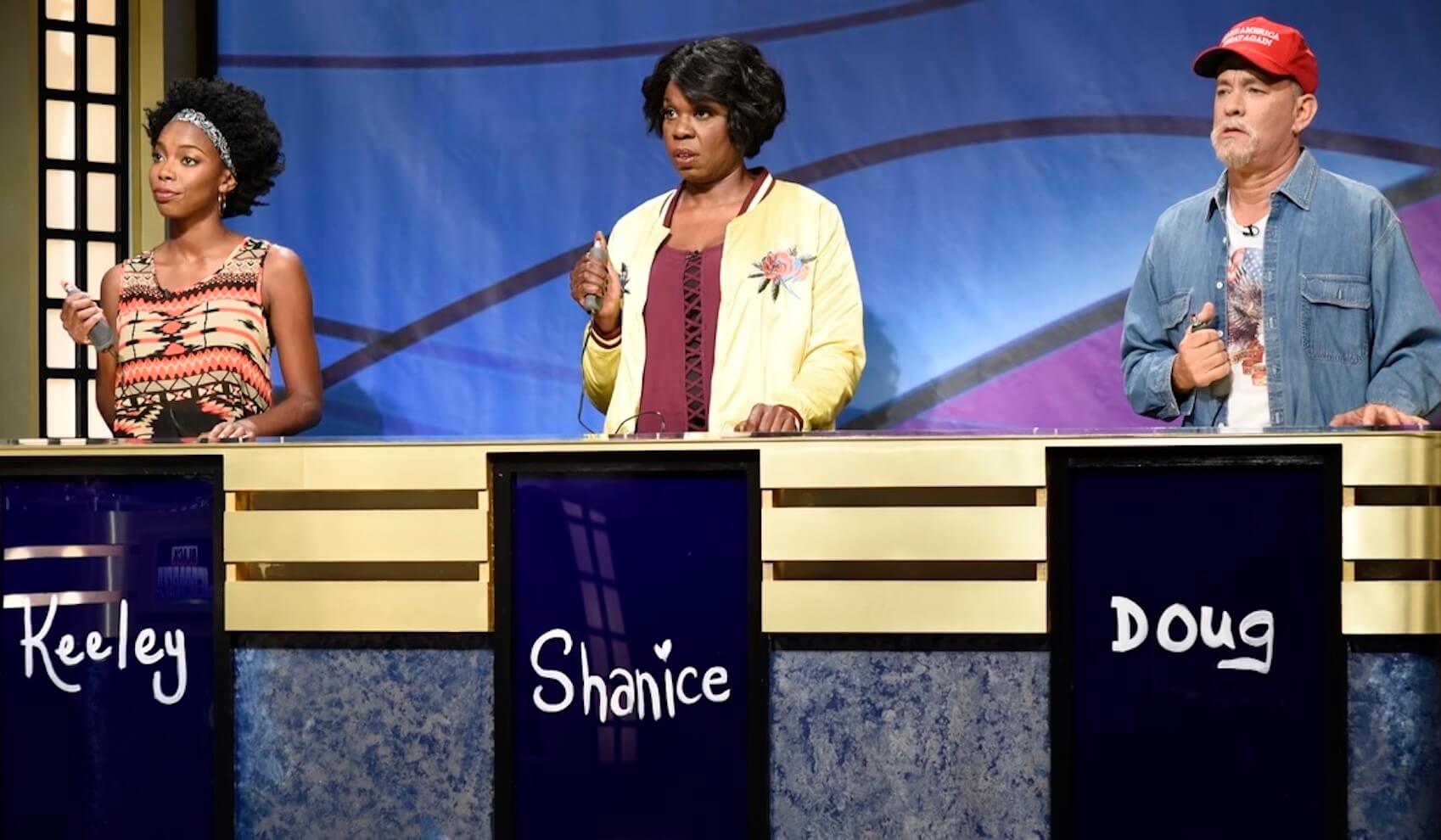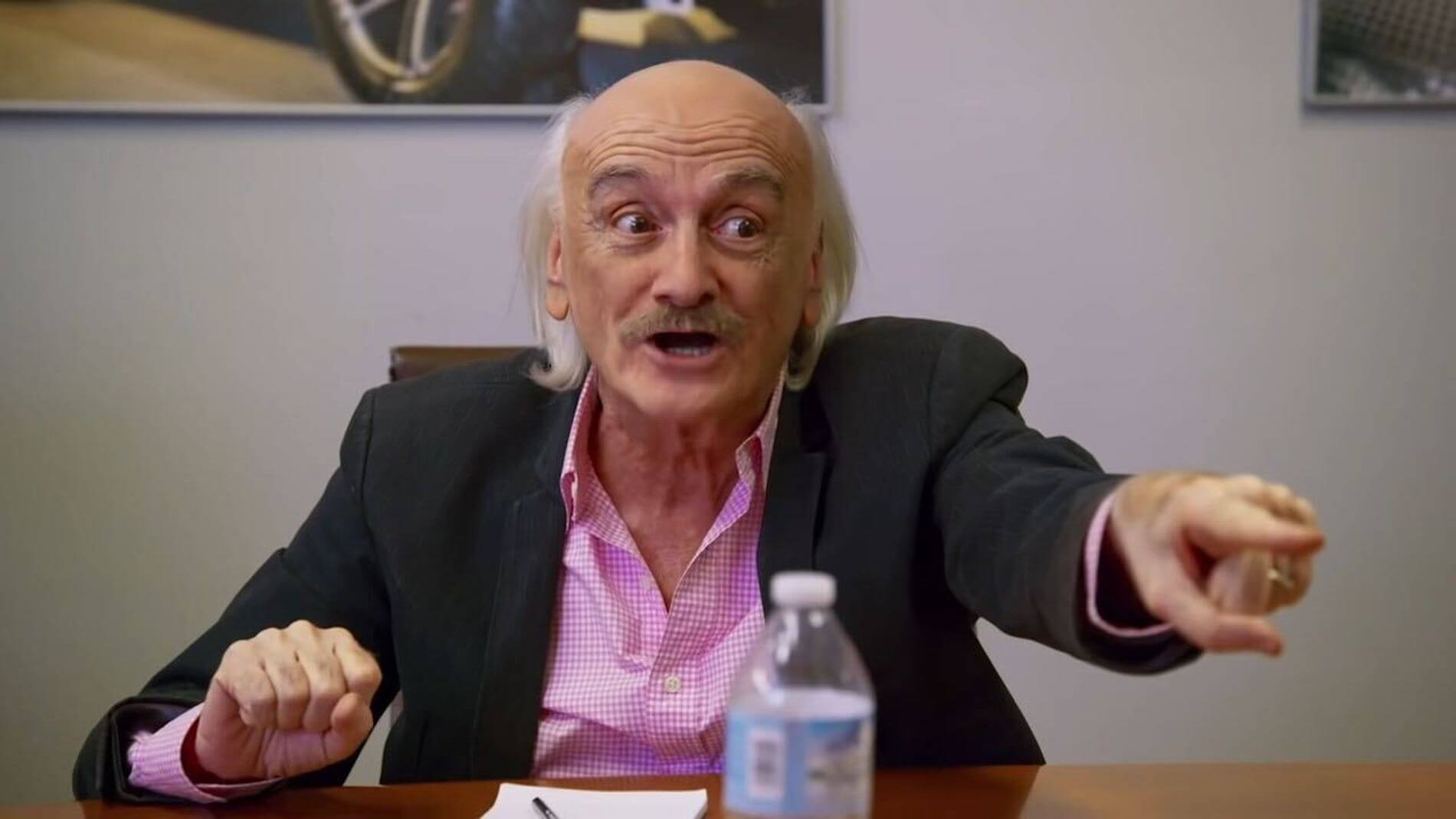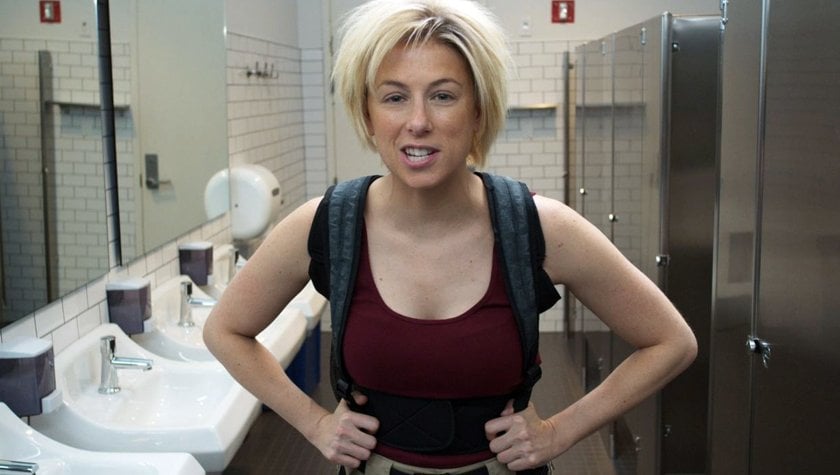How to Write a Skit: 10 Tips From the Skit Masters
February 9, 2024
In our modern world of TikTok memes, dumb (though appreciated) dog and cat videos, and influencer media dominance, the ol’ classic comedic form known as “the sketch” is one of our most appreciated and vital forms of artistic expression.
It’s the perfect nugget of acting, humor, and social observation that, when done right, can capture the zeitgeist of our times. Monty Python, I Think You Should Leave, Saturday Night Live, Chappelle’s Show, Key & Peele, and Mr. Show—the list goes on of sketch variety shows that elicit happy and heated conversations by Monday morning water coolers, over IM, on social media, and beyond.
Yet many comedy writers—particularly those relatively new to the game and the confusing wonderland of Hollywood—are still a little unclear about what a comedy sketch is, let alone how to consistently write a good one.
What Is a Comedy Sketch?
“Let’s start with what it isn’t,” says Marina Tempelsman, an academic director and sketch teacher for Upright Citizens Brigade, which has helped launch the careers of Amy Poehler, Aubrey Plaza, Ed Helms, Donald Glover, and many more. “Some people think a sketch is a short play. But the audience know from watching SNL that it’s something different than that.
“A short play is something that explores a narrative and has characters that experience a change of heart,” she says. “But a sketch is not a narrative. Instead of focusing on a plot, a sketch is a short piece exploring a central comedic idea.”
But, some might ask, why would a writer need to know how to write one? If you’re a stand-up comedian, feature film scribe, or TV sitcom showrunner, how would writing comedic sketches—for improv, stage shows, YouTube videos, your entertainment—serve you?

“In an overall sense, the tools you will use to make a live audience laugh are the same tools that will make a film and TV audience also laugh,” says Sean Hogan, a sketch and improv teacher and a former Main Company member at The Groundlings (with alums like Will Ferrell, Kristen Wiig, Paul Reubens, and Melissa McCarthy.).
OK, sold. So, how do you write a sketch? Below are ten essential tips to guide you on your journey to SNL stardom, followed maybe by feature-comedy movie deals and a star turn to Oscar-winning drama.
Read More: Rising through the Ranks: Comedy Screenwriter Bri Morris
1. Know the Sketch Types
Sketches come in three general forms: character sketches, premise sketches, and parody sketches.
Character Sketches
A character sketch features a “weirdo, goofball, freak. It’s the way that character sees the world that is funny. It’s that character’s point of view. They act inappropriately with their point of view,” says Hogan. Kristen Wiig’s SNL character Penelope, who acts like a narcissist on steroids, is a good example.
“Everything she does draws attention to her,” Hogan says, “so they put her in situations where she should not be the center of attention.”
Tempelsman recalls the SNL sketches featuring Rachel Dratch as Debbie Downer. In one classic, she can’t even let anyone enjoy Disney World.
Premise Sketches
In a premise sketch, you take a normal situation and turn it on its head.
Hogan points to an SNL sketch, "The Sinkhole," ostensibly about a sinkhole that has opened up in downtown Tampa, Florida, and swallows up cars. That's a big local news story. But when the local news anchors toss to their reporter (played by Kenan Thompson), concern over the sinkhole is soon forgotten when two witnesses enter the scene. The woman (played by Margot Robbie) is so attractive, and her apparent partner, Matt Shatt (played by Mikey Day), is so plain and nerdy that the news team turns their queries from the sinkhole into figuring out how in the world they could be together.
Is Matt Shatt rich? Well-endowed? Something else they’re not thinking of? The queries escalate until… More about this one in a moment.
Another oft-cited example of a funny-premise sketch is Mr. Show’s "The Audition," featuring David Cross, Bob Odenkirk, and Dino Stamatopoulos. Cross is an actor trying out for a role, and Odenkirk and Stamatopoulos are casting. Cross’s character announces that his monologue revolves around an “audition” by an “actor.” Then he begins. Or does he? There is a chair involved, as well as much confusion that’s reminiscent of Abbott & Costello’s "Who's on First." But, as most people say when asked to explain it, just watch it.
Parody Sketches
These are pretty self-explanatory: You take a known thing—person, movie, or place—and you amplify, exaggerate, satirize, and make fun of it.
Presidents and former presidents are favorite targets of this, especially if they are Donald Trump. In "Trump Easter Cold Open," Trump (impersonated by James Austin Johnson) interrupts The Last Supper (a parody and a premise sketch in one!), and Johnson nails such an astonishing and hilarious portrayal that his castmates (including Mikey Day as Jesus Christ) can’t keep straight faces.
2. Mind Your Sketch Length
According to Hogan and Tempelsman, sketch lengths run about four minutes. It’s enough time to perform the set-up, run through your funniest beats, and get out before you start to lose the audience.
Stick to this time frame.
3. Follow the Basic Sketch Structure
Act 1 is the set-up. A guy gets set up on a date with someone who is not over her ex.
Act 2 is the meat of it. The first funny thing happens, then the second, and the third.
Act 3 is the ending. It should be short. It could be one word.
Read More: What To Do When You’re Lost in Your Script
4. Use Your Anger (and a Clock) to Brainstorm Ideas
So, where do you get sketch ideas?
Hogan emails his students before their first Beginning Sketch Writing class with him to write down 50 things that piss them off, bother them, or annoy them.
“Most of the students don’t think they have it in them,” Hogan says. He tells them to sit down with a pad and pen and set a timer for ten minutes. Then, start writing. “As soon as you box in a writer and give them a deadline, suddenly they can write,” he says. “All of a sudden, it spills out. I’ve had people come in and say, ‘I wrote 75!’”
“When you have a deadline,” Tempelsman concurs, “suddenly you start noticing ideas that just might have slipped through your mind before. It’s a muscle that you work, turning offhand thoughts into sketches.
“Start with noticing what bumps your brain a little bit,” she says. “Like, ‘Oh man, this receipt from CVS is super-long!’”

5. Let Your Brain Rest a Moment
Set your list aside. Come back to it the next day. Your brain will look at your ideas differently, more objectively. Only then should you pick a favorite and start writing it.
“Choose the one that moves or angers or tickles you the most,” Hogan says. “Ask yourself, ‘Are there multiple points I want to make here?’”
6. Make Another List
Whether you’re working with an unusual character in a situation that amplifies what’s odd about them or a traditional situation that goes off the rails, the next step is to see if your idea has legs.
“Everybody’s tickled by something different,” Tempelsman says. “You learn the sketch structure so that you know what to do with the thing you find funny. It becomes about how you unfurl that funny thing.”
Hogan says to make another list: 25 beats, or funny things that might happen, based on this unusual situation you’ve created. Maybe it revolves around that date, Hogan proposes. What would a woman do to reveal that she’s not over her ex? Would she cry over a song playing at the restaurant? Would she ask her date to wear a certain cologne? Would her ex show up as the waiter? Would the ex want to fight her date?
If you get stuck thinking up funny beats, Tempelsman says to make “assumptions about why this situation would happen.”
Why, in other words, are the CVS receipts so long? Is there someone at the CVS plant trying to send coded “help” messages? Is this where all the toilet paper in the world is going?
“This is what we call a ‘justification’ in sketch,” she says. “What are different reasons this could happen?”

7. Choose Your Favorite Beats
Next, narrow down your beats/funny moments/jokes. In a four-minute sketch with three acts, you only need four to six beats. Choosing the right ones gets into figuring out what is funny.
It is a learning process. But one tip that all professional sketch writers, comedy writers, and comedians know: Make sure each joke ends with the right word.
“You can ruin a joke by saying three more words after the punchline,” says Hogan. “It’s called stepping on your laugh.”
8. Least Funny to Funniest
Arrange your funny sketch beats with two criteria:
- Chronologically
- Least funny to funniest
In the aforementioned “Sinkhole” sketch, Matt Shatt has landed this beautiful woman, and the queries from the reporter, the anchors, and the sportscaster escalate until the audiences learn that his beautiful spouse is a Kennedy and he doesn’t even have a penis. And she loves him for it.
“Instead of a narrative arc, [a] sketch is a staircase that keeps going up, up, up … You are hitting on the incongruity of that unusual or funny thing in ways that are bigger every time.”
9. Know When to End It
Both Tempelsman and Hogan admit the ending can be tricky. It takes practice to know when to get out.
“You’re not working toward a plot point,” Tempelsman says. “You don’t want to bring the sketch to a close in a narrative way. You’re sort of blowing out the idea … It should be a funny reversal that undercuts everything that came before it in a way you couldn’t do in a traditional narrative.”

10. Put It Out There, and Start Again
A sketch only truly lives in front of an audience. Set yours free at your local theater or improv class. Or film it on your phone and put it on the socials. Get feedback.
Then?
Write another one. And another. And another. You will get better, Tempelsman says.
“Because sketches are so short, and because the pacing is so quick,” she says, “you’re turning them around pretty quickly. You are closing your process loop over and over and over again. You’re learning so fast and so quickly. I think it’s an incredibly illuminating type of writing.”
And, Hogan stresses, don’t downgrade this pursuit as simply “trying to make people laugh.” It’s more than that. Hogan says that sketch writing—like any other art form—is essential in spotlighting poetic moments in the human experience.
“Even if you are talking about comedy, a writer doesn’t just go through life,” he says. “A writer steps apart from life, thinks about it, examines it, and comes to conclusions. [Writers] are like philosophers in that way.”

---
If you’d like to take a beginning sketch-writing class, Hogan has been teaching his method for 14 years, and the next one is coming up in January in Los Angeles. Upright Citizens Brigade has ongoing in-person (in LA and New York) and online classes, and The Groundlings offers in-person (LA) and online. Both improv troupes offer diversity scholarships and financial aid.
Read More: Five Overused Comedy Bits to Avoid
Written by: Jamie Allen
Jamie Allen is a writer based in Los Angeles. He's the creator of the Squirrel Census, a science, design, and storytelling project that was featured in The New York Times and other outlets.



